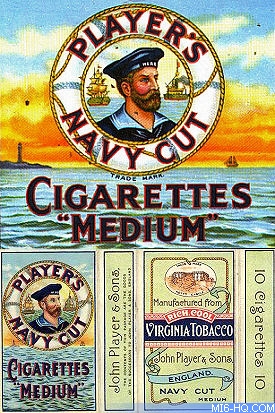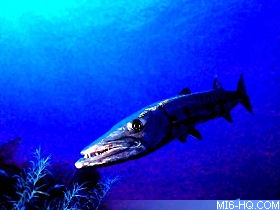 |
| |
In the eleventh installment in the series looking
at the world of James Bond, we visit the Bahamas...
|
|
The World Of James Bond - The Bahamas
28th May 2005
James Bond returns to Ian Fleming’s beloved West Indies
in Thunderball, when he is sent to Nassau in The Bahamas in the
first of his adventures to feature SPECTRE. An experimental plane
carrying two atomic bombs has been stolen and SPECTRE is blackmailing
the UK and US Governments into a paying £100 million in
gold in exchange with the threat of destroying a target of equal
value.
| The Bahamas is an archipelago of islands
originally settled by the peaceful Lucayan Indians, who
lived off the sea. However, within 25 years of the Spanish
arriving in the Bahamas the entire population of 50,000
was gone, shipped to Hispaniola as slaves. As the plundering
of Central and South America took hold, galleons laden with
treasure headed for Spain were soon passing, but many voyages
were cut short by the reefs. Stories of treasure brought
pirates, who hid among the many islands, which remained
largely unsettled and unclaimed until England’s Charles
I granted them to his attorney general. For a time home
to a Privateers Republic, piracy was rife until the 19th
century, when the Governor declared Expulsis Piratis/Restituta
Commercia – “piracy expelled/commerce restored”
– used afterwards as the national motto until independence
in 1973.
|
|
 |
Following the American War of Independence British loyalists
swarmed to the islands, bringing cotton and slaves, but most of
the farms failed and it was not until nearby Florida began to
boom as a holiday destination that The Bahamas began to benefit
too. With the introduction of prohibition to the United States
in 1920 The Bahamas boomed, finding itself ideally situated for
smuggling alcohol into Florida. However, when prohibition was
repealed in 1933 the economy suffered until the Second World War,
when American servicemen were sent there on R&R. After the
war the islands began to see the arrival of wealthy Americans
for the winter, bringing about another boom, while political and
social changes gathered enough momentum for independence in 1973.
 Above: Map of New Providence
Above: Map of New Providence |
Nassau
Nassau, on the island of New Providence, is the capital of The
Bahamas. Originally named Charles Towne in the mid 16th Century
after the King, it was renamed after William III of Orange-Nassau
in 1695 and is a popular tourist destination due to its tropical
climate.
When James Bond is heading for the airport by taxi to meet a
CIA man sent to assist him on the case, he “hoped he wouldn’t
be a muscle-bound ex-college man with a crew-cut and a desire
to show up the incompetence of the British”. He needn’t
have worried though, the CIA man in question turns out to be none
other than Felix Leiter, drafted from Pinkertons due to the emergency,
and as usual he is on form. After checking into the Royal Bahamian
hotel they immediately get down to business; “they went
up to his room and sent for two double dry Martinis on the rocks
and the menu”.
Lunch leaves them somewhat less than impressed though;“Half
an hour and one more double dry Martini later, their luncheon
came. The whole thing amounted to about five shillings’
worth of badly cooked rubbish. They ate in a mood of absentminded
irritation, saying nothing. Finally Leiter threw down his knife
and fork. ‘This is Hamburger and bad Hamburger. The French
onion rings were never in France and rhat’s more,’
he poked at the remains with his fork, ‘they’re not
even rings. They’re oval.’”
On another occasion Bond and Leiter visit the hotel bar and again
Leiter is unhappy. When the two dry Martinis arrive on their table
Leiter tells the waiter to send over the barman: “I asked
for a Martini and not a soused olive”, he says. Removing
the olive the “glass, that had been three-quarters full,
was now half full.”

Above: The original Players "Navy
Cut" cigarette logo (top) and packaging (bottom). |
|
After explaining the breadth of his knowledge
of scamming customers with short measures and diluted drinks
he tells the barman to “mix us two large dry Martinis
without olives and with some slices of lemon peel separate.
Okay? Right, then we’re friends again.” This
time the barman fairs better: “The drinks came. They
were excellent. Leiter calmed down, ordered a second round”.
Later Bond and Felix visit to the Casino, which according
to Fleming “used to be the only legal casino on British
soil anywhere in the world”, to take another look
at their main suspect, Emilio Largo. Following “coffee
and a stinger at the bar they separated and went to the
tables”, where Bond tackles Largo at a game of chemin
de fer.
Having won some money, Bond buys Largo’s “niece”,
Domino, dinner; they order Clicquot rosé Champagne
and fifty dollars’ worth of Beluga caviar –
“anything less, he had commented to her, would be
no more than a spoonful”. During the course of dinner
Domino tells Bond about her first and true love –
the sailor on Player’s Navy Cut cigarettes –
and the story she had composed around him. |
Lyford Key
Largo is staying at Palmyra, a property he is leasing at Lyford
Key (also spelt Lyford Cay), rented from a “Mr Bryce”
with his boat, the Disco Volante moored just offshore. Fleming based
Palmyra’s description and location on his friend Ivar Bryce’s
property Xanadu.
| Largo is supposedly hunting for a hoard
of treasure and as he has little else to go on, Bond decides
to investigate.
Renting the hotel launch for $20 an hour, Bond and Leiter
“ran out westwards from the harbour, past Silver Cay,
Long Cay and Balmoral Island, and round Delaporte Point.
Five miles further down the coast, encrusted with glittering
seashore properties the boatman said cost £400 per
foot of beach frontage, they rounded Old Fort Point and
came upon the gleaming white and dark blue ship lying with
two anchors out in deep water just outside the reef”.
|
|

Above: Lyford Key |
Bond tells Felix a little about the Disco Volante: “She’s
Italian. Built by a firm called Rodrigues at Messina. Thing called
an Aliscafos. She’s got a hydrofoil under the hull and when
she gets going you let this sort of skid down and she rises up
and practically flies. Only the screws and a few feet of the stern
stay in the water. The Police Commissioner says she can do 50
knots in calm water. Only good for inshore work of course, but
they can carry upwards of a hundred passengers when they’re
designed as fast ferries. Apparently this one’s been designed
for about forty. The rest of the space is taken up with the owner’s
quarters and cargo space”.
 Above: A hydrofoil similar to that
which inspired the Disco Volante
Above: A hydrofoil similar to that
which inspired the Disco Volante |
In fact the firm is Rodriquez
Cantieri Navali, the designers of the first commercially viable
hydrofoil ferry. Carlo Rodriguez had become aware of the hydrofoil
concept during the Second World War, when the Germans had studied
but not developed the idea. After the war, Rodriquez hired a German
naval architect to work in Messina, specifically to further the
concept towards producing a commercially viable hydrofoil design.
This research paid of and in 1956 the Freccia del Sole became
the first hydrofoil ferry. It is likely that the Disco Volante
was a later model, the PT50, with capacity for up to 140 passengers
when configured as a ferry.
Following their visit, Bond therefore decides to take a closer
look at the Disco Volante, this time from below. Equipped by the
local police with a full set of scuba gear and carrying a waterproof
Geiger counter to detect any radiation that would indicate that
the bombs are aboard, Bond slowly makes his way towards the vessel.

Above: A barracuda off the coast of
Nassau. |
|
On the way to the boat Bond realises that
he is not alone; a big barracuda, “moving parallel
with Bond, ten yards away just inside the wall of grey mist
that was the edge of visibility, was showing its danger
signals”.
Although nervous of the predator, a fish that possesses
“the sharpest row of teeth in the ocean”, Bond
calmly continues on his way, until he encounters the anchor
of the Disco Volante. Ascending the anchor line, Bond finds
a trap door built into the hull, “twelve feet square,
divided down the centre. Bond paused for a moment, wondering
what was inside the closed doors”, but his Geiger
counter detects nothing unusual.
|
Ian Fleming got the idea for the trap doors from his time working
in Naval Intelligence. An Italian tanker that had remained opposite
the rock of Gibraltar since the beginning of the war was used
by the Italians to launch attacks on allied shipping in Gibraltar
harbour. When the crews of three human torpedoes used in such
a raid where captured they first claimed that they had exited
a submarine. After a similar attempt it turned out that they had
exited through trap doors in the hull of the tanker.
Off New Providence
Hiring a small amphibious plane, Bond and Leiter decide to widen
the scope of their search away from New Providence. “Anything
as big as the Vindicator would have been spotted anywhere on any
of the air routes. So I’ve marked off the areas where there’s
the minimum traffic”, Bond tells Leiter. Deciding to start
with the Grand Bahama group, they fly over the Berry Islands and
then to Grand Bahama, where Felix decides to buzz the rocket base;
“They flew eastwards along the fifty miles of beautiful
coast towards what looked like a small city of aluminium hutments
amongst which red and white and silver structures rose like small
skyscrapers above the low roofs”. From Grand Bahama they
fly to the Bimimi Group, south to the Cat Cays and then 30 miles
south where “there were little unnamed specks on the Admiralty
chart. Soon the dark water began to shoal again to green. They
passed over three sharks circling aimlessly”. Something
about this scene unsettles Bond; “Just go back up once more,
Felix. Over the shoals. There’s something -”. And
something there is all right; although the bombs are not on board,
they have found the Vindicator. Incidentally, the remains of the
Vulcan bomber used in the film remains a popular dive site, although
in reality it was a mock-up consisting of a fabric covered metal
frame. It is located off the south west of New Providence, close
to The Tears Of Allah, which appeared in Never Say Never Again.
The Rocket Base on Grand Bahama
Deciding that the best means of finding the bombs is to allow
Largo to lead them to them, Bond and Leiter call up the Manta,
a nuclear powered submarine. Tailing the Disco Volante from Lyford
Key, they head towards the western end of Grand Bahama and when
Largo and his men moor their boat and enter the water in scuba
equipment to retrieve the bombs from the depths, Bond, Leiter
and a team of Navy divers are there to save the day.
"The World Of James Bond" will continue next month...
Article by David Leigh.